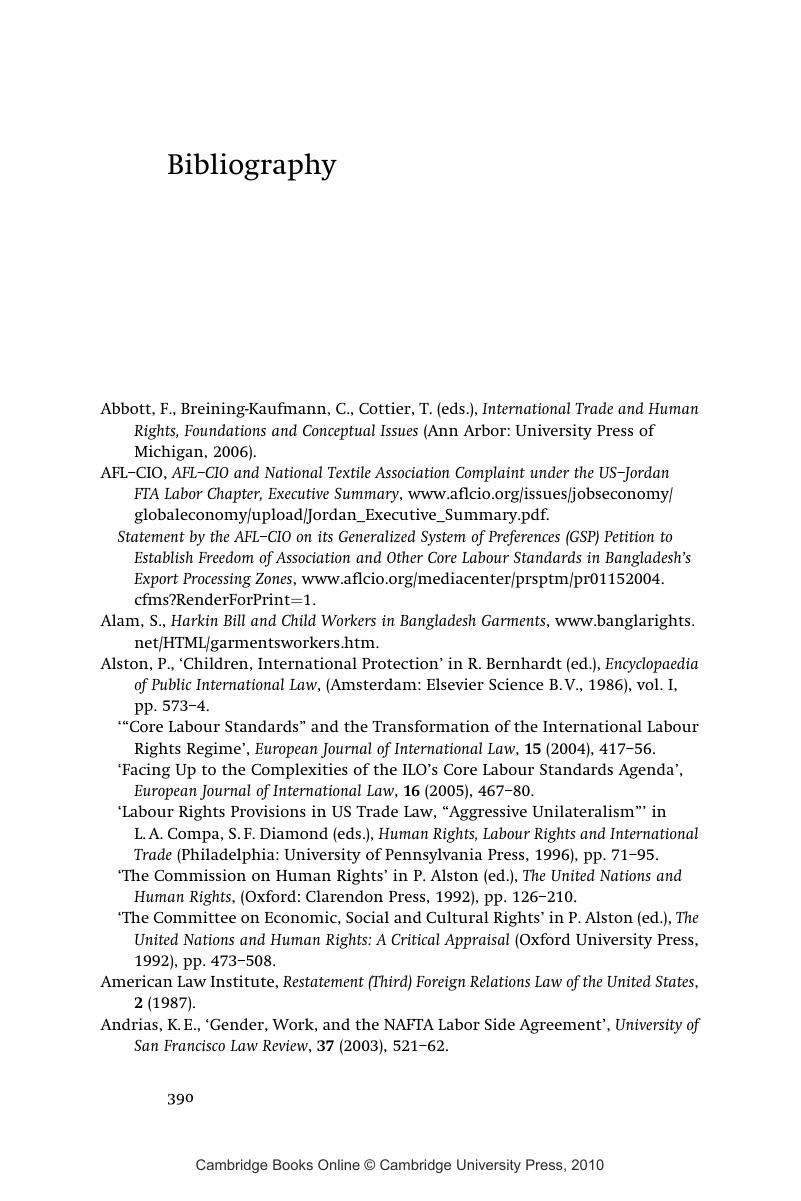Book contents
- Frontmatter
- Contents
- List of abbreviations
- Foreword
- Acknowledgements
- Introduction
- 1 The problem of child labour
- 2 The prohibition of child labour in international law
- 3 UN and ILO implementation mechanisms for the prohibition of child labour
- 4 Trade measures on child labour
- 5 Recommendations for an ILO–WTO enforcement regime
- Concluding summary
- Bibliography
- Index
- CAMBRIDGE STUDIES IN INTERNATIONAL AND COMPARATIVE LAW
- References
Bibliography
Published online by Cambridge University Press: 20 February 2010
- Frontmatter
- Contents
- List of abbreviations
- Foreword
- Acknowledgements
- Introduction
- 1 The problem of child labour
- 2 The prohibition of child labour in international law
- 3 UN and ILO implementation mechanisms for the prohibition of child labour
- 4 Trade measures on child labour
- 5 Recommendations for an ILO–WTO enforcement regime
- Concluding summary
- Bibliography
- Index
- CAMBRIDGE STUDIES IN INTERNATIONAL AND COMPARATIVE LAW
- References
Summary

- Type
- Chapter
- Information
- The Challenge of Child Labour in International Law , pp. 390 - 417Publisher: Cambridge University PressPrint publication year: 2009

